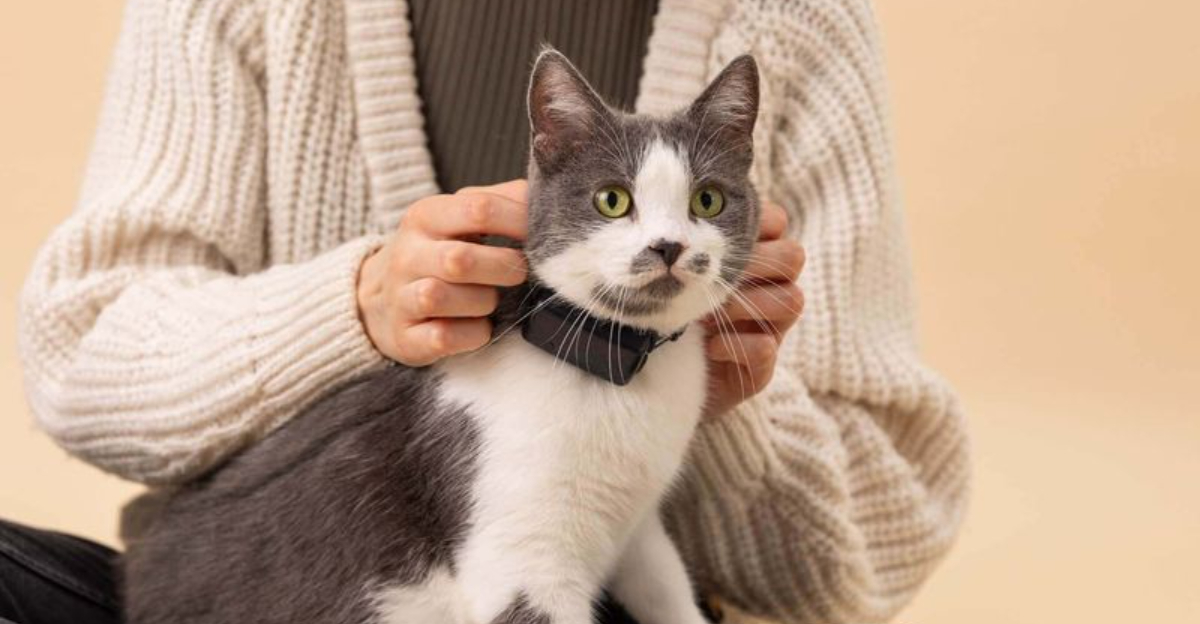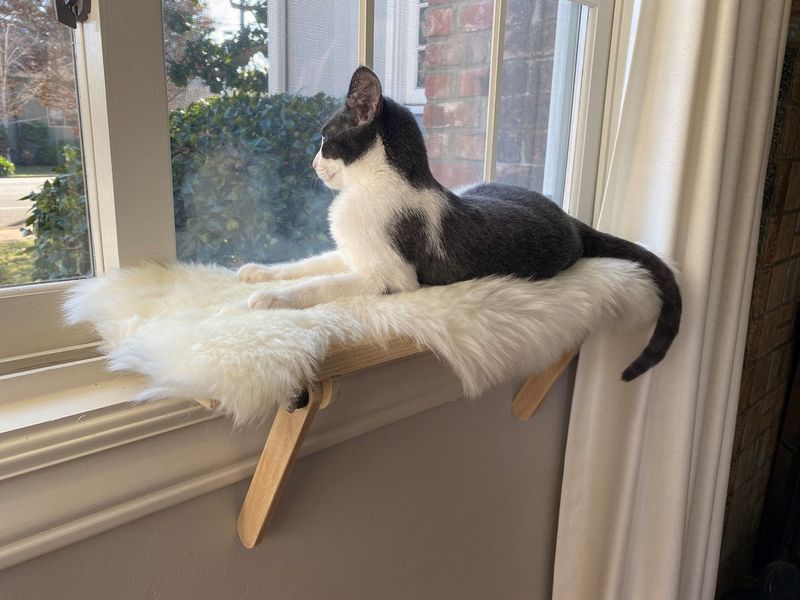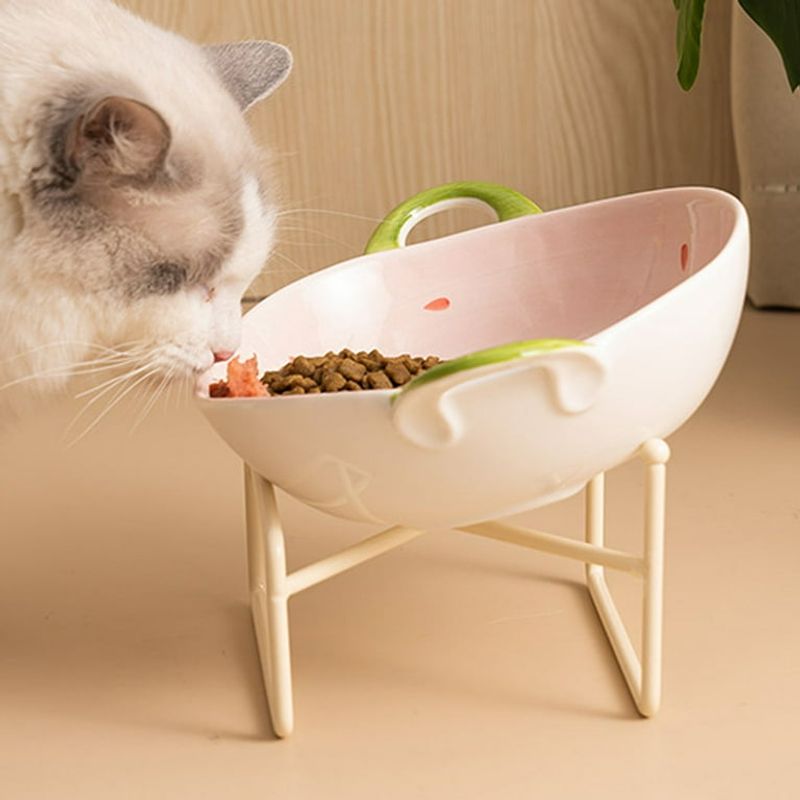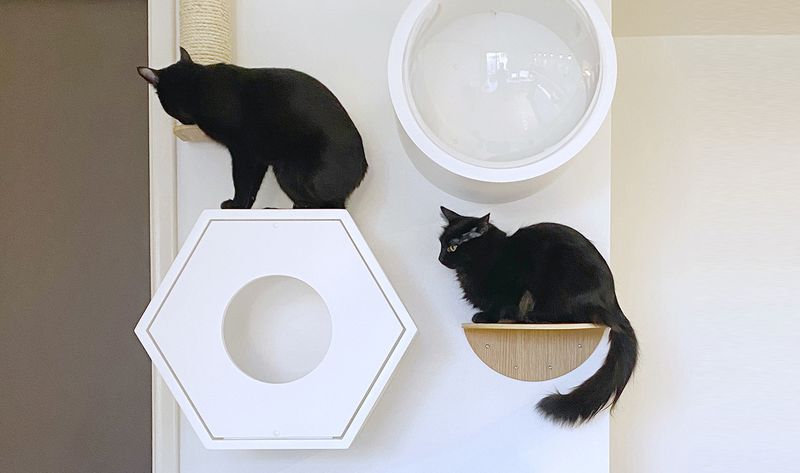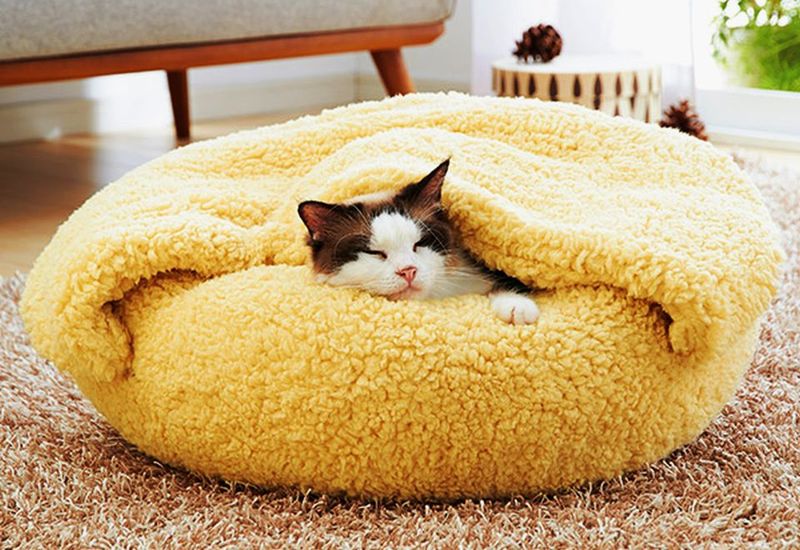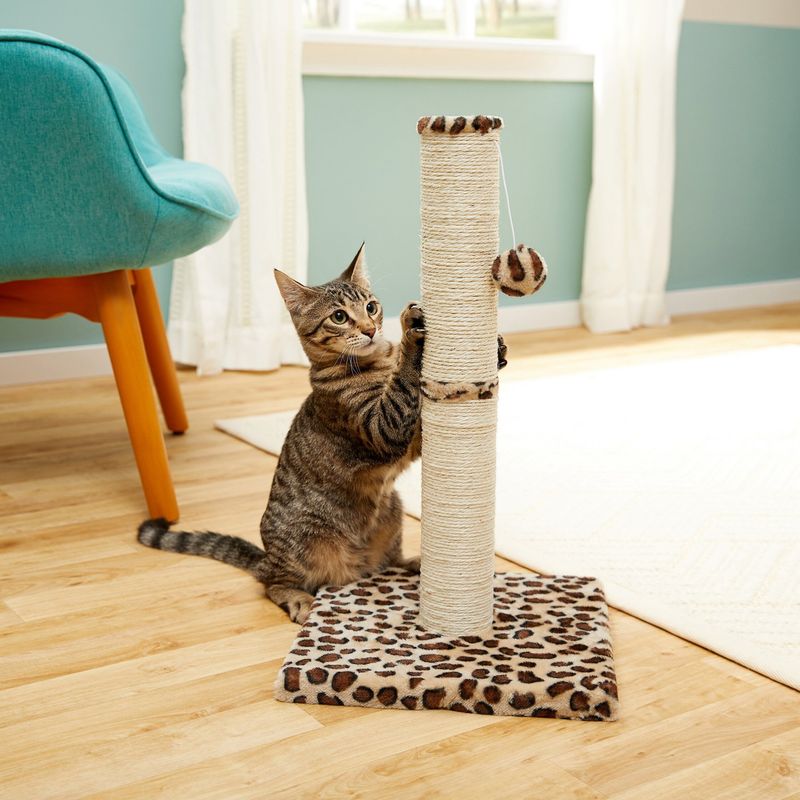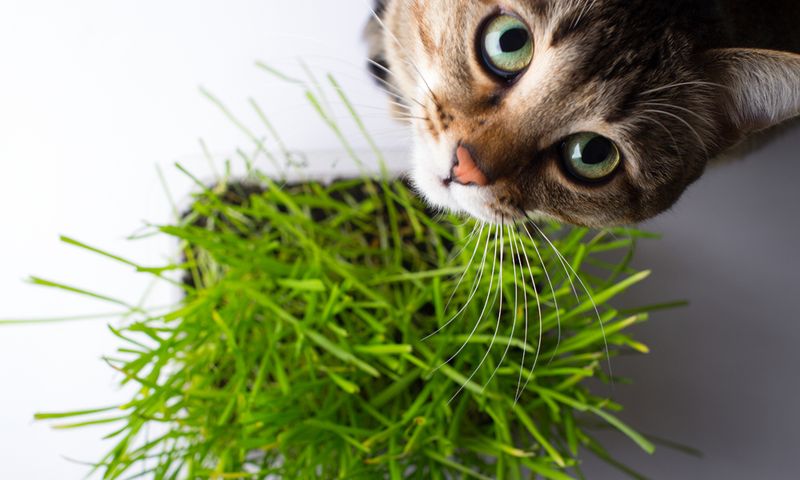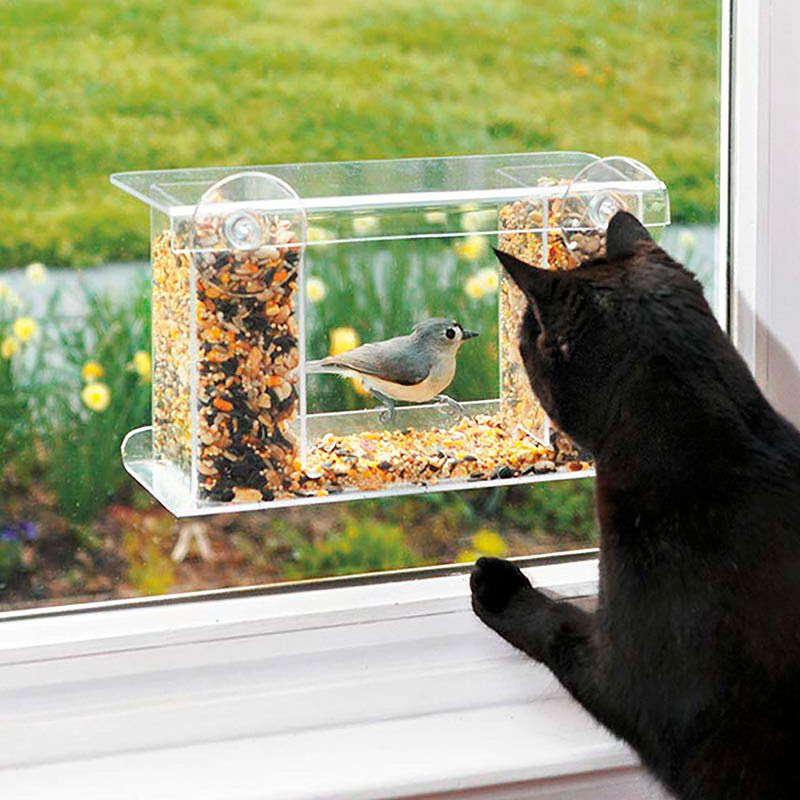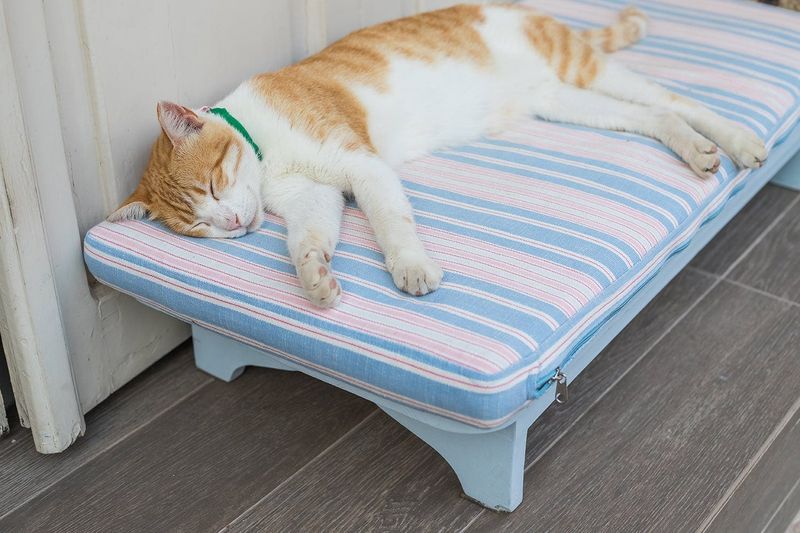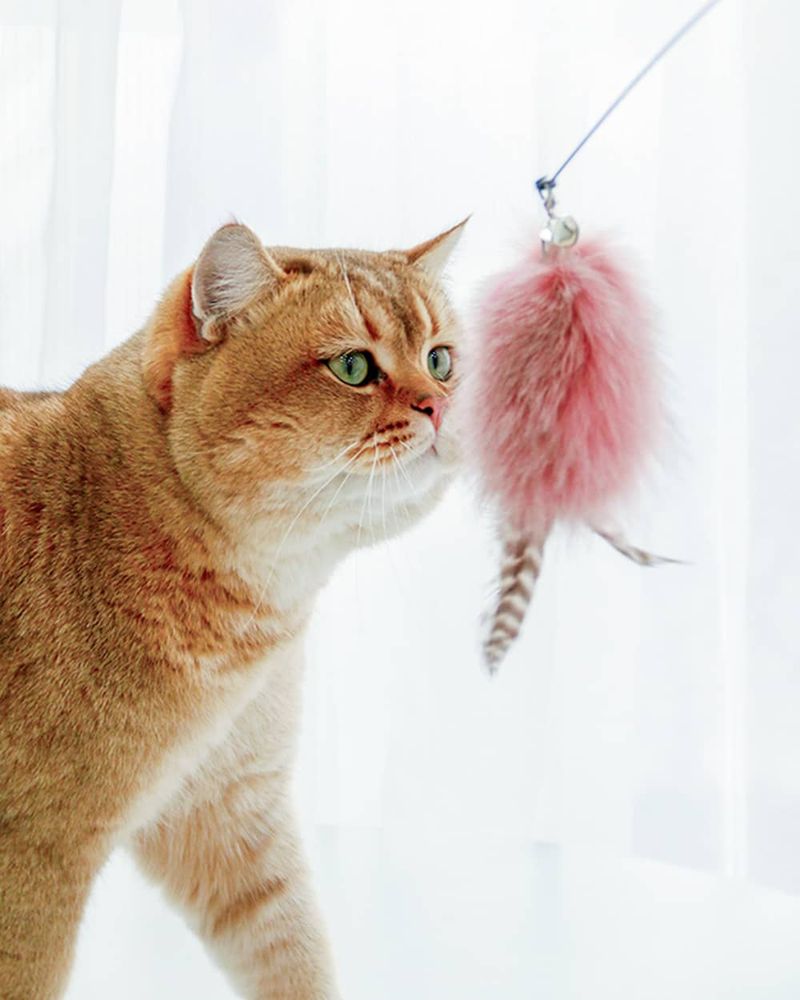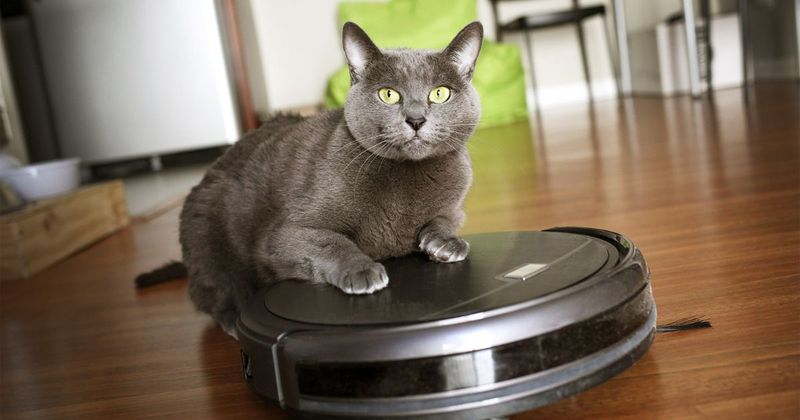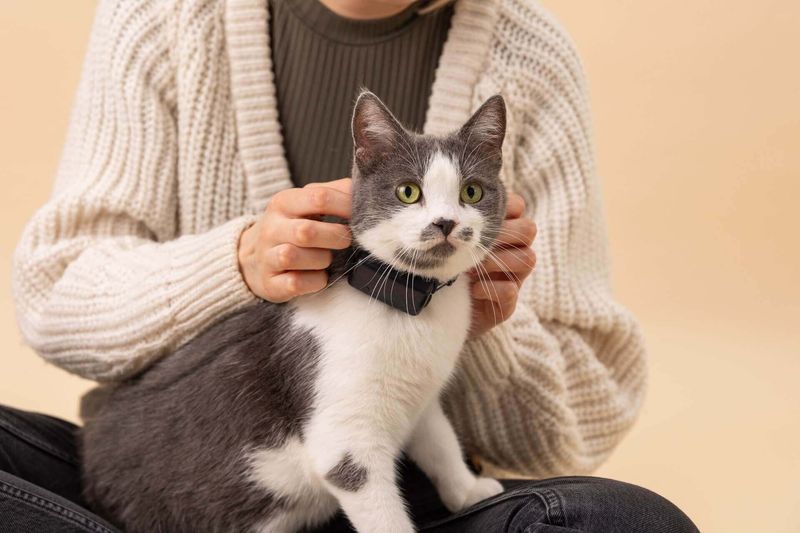📖 Table of Content:
- 1. Cozy Window Perches
- 2. Elevated Food Bowls
- 3. Hidden Litter Box Solutions
- 4. Vertical Climbing Spaces
- 5. Drinking Fountain Installation
- 6. Soft Bedding in Quiet Corners
- 7. Scratch-Friendly Surfaces
- 8. Cat-Safe Plant Garden
- 9. Viewing Stations Near Wildlife
- 10. Temperature-Controlled Resting Spots
- 11. Safe Outdoor Access
- 12. Designated Play Zones
- 13. Reduced Cleaning Chemical Use
- 14. Noise Reduction Strategies
Cats are masters of subtle appreciation, often expressing contentment in quiet, understated ways. Unlike dogs, they may not show gratitude through overt gestures, but they are deeply aware of changes in their surroundings. Small comforts and thoughtful spaces do not go unnoticed.
Felines experience the world through heightened senses and refined instincts. Sounds, textures, temperatures, and scents play a much bigger role in their daily comfort than many people realize. Their needs are unique, and even minor environmental changes can have a major impact.
By tuning into these needs, it’s possible to create a living space that supports both their physical well-being and emotional security. Simple adjustments—like safe climbing zones, cozy hideaways, or quiet napping spots—can make a big difference. These thoughtful touches help build trust and offer a sense of safety that every cat deserves.
1. Cozy Window Perches
Sunbathing ranks high on your cat’s priority list. Adding a dedicated window perch gives your furry friend a front-row seat to bird-watching while soaking up warm rays. These platforms are especially valuable in homes with limited windowsill space.
Look for options with suction cups for easy installation or shelf-style perches that require no tools. The ideal location catches morning sun without overheating during peak afternoon hours.
Your cat will spend hours in this spot, so consider adding a soft cushion for extra comfort. Many cats will abandon expensive cat trees for a simple, well-placed window seat.
2. Elevated Food Bowls
Raising your cat’s dining area off the floor makes mealtime more comfortable and dignified. Flat-faced breeds particularly benefit from this adjustment, as it reduces strain on their necks and helps prevent digestive issues like regurgitation.
Choose a stand that positions the bowl at roughly your cat’s chest height when standing. Sturdy ceramic or stainless steel bowls are best, as plastic can harbor bacteria and potentially cause chin acne in sensitive cats.
An added bonus? Elevated feeders help contain mess and prevent ants from invading the food area. Your cat will appreciate this thoughtful upgrade to their dining experience.
3. Hidden Litter Box Solutions
Cats value privacy during bathroom breaks just like humans do. Converting a cabinet, side table, or unused space into a discreet litter area gives your cat the seclusion they crave while keeping your home looking tidy.
Cut a cat-sized entrance in furniture or use decorative screens to create a hidden nook. Add a small battery-operated motion light inside if the space is dark. This setup reduces litter tracking and contains odors better than exposed boxes.
For multi-cat households, create several private spots throughout your home. Cats appreciate having territorial options and will reward your thoughtfulness with better litter box habits.
4. Vertical Climbing Spaces
Seeking high ground is second nature to cats—they use it for safety and to watch their surroundings. Step-style wall-mounted shelves cater to this instinct and make efficient use of vertical space.
Secure shelves at varying heights, ensuring each jump is manageable for your cat’s abilities. Cover them with non-slip material for better traction. Strategic placement near windows or overlooking main living areas gives your cat prime viewing spots of both outdoor and indoor activities.
Beyond the fun factor, vertical spaces reduce tension in multi-cat homes by providing escape routes and establishing clear territory. Your cat will silently thank you for respecting their evolutionary need to climb.
5. Drinking Fountain Installation
Many cats refuse to drink standing water due to instinctual wariness of potential contamination. A pet fountain appeals to their preference for moving water and encourages better hydration, which helps prevent urinary tract problems.
Ceramic or stainless steel fountains are preferable to plastic ones. Place the fountain away from food bowls and litter boxes – cats naturally avoid drinking near these areas.
Regular cleaning is essential, but the health benefits make maintenance worthwhile. Cats with proper hydration have healthier skin, shinier coats, and fewer urinary issues. Your cat’s increased water intake might not be obvious, but their improved health will speak volumes.
6. Soft Bedding in Quiet Corners
With up to 16 hours of daily sleep, cats benefit from having multiple nap zones. Providing soft, secluded spots in quiet corners gives them the peaceful retreat they crave.
Line these spots with soft, washable bedding that retains your cat’s scent between cleanings. Consider heated options for older cats with arthritis or those who seek extra warmth. The ideal location offers some elevation and a partial enclosure for security.
Rotating bed locations seasonally helps too – cooler spots in summer, warmer areas in winter. Your cat will cycle between these havens, showing their approval through frequent use and deep, contented sleep.
7. Scratch-Friendly Surfaces
Scratching isn’t destructive behavior – it’s a biological necessity for cats to maintain claw health and mark territory. Providing appropriate scratching surfaces throughout your home protects your furniture while satisfying this natural urge.
Offer variety in textures and orientations. Some cats prefer vertical posts, others like horizontal pads. Sisal, cardboard, and carpet materials appeal to different scratching preferences.
Strategic placement is key – position scratchers near sleeping areas and in social spaces where your cat spends time. Apply catnip or silvervine powder to attract initial interest. When your cat consistently uses these designated areas, they’re silently acknowledging your understanding of their needs.
8. Cat-Safe Plant Garden
Since cats love to chew on plants, it’s important to steer them toward safe options. A mini cat garden with catnip, mint, and grass satisfies their cravings without the danger of toxic foliage.
Arrange these plants in shallow containers where your cat can access them easily. Growing them in rotation ensures a constant supply of fresh greens. This natural buffet offers nutritional benefits and helps with hairball control.
Beyond the health advantages, watching your cat interact with plants provides entertainment for both of you. The subtle head rubs and contented chewing are clear signs that this simple addition to your home environment is deeply appreciated.
9. Viewing Stations Near Wildlife
Bird-watching provides mental stimulation for indoor cats. Positioning a comfortable perch near windows that overlook bird feeders or busy outdoor areas creates hours of entertainment that satisfies hunting instincts safely.
Install a bird feeder outside that attracts consistent visitors. Add a comfortable cat bed or cushion at the window for extended viewing sessions. For ground-floor apartments, consider window-mounted bird feeders that bring the action closer.
This enrichment activity reduces boredom-related behavior problems and provides healthy mental exercise. Your cat’s chattering and intense focus on outdoor creatures aren’t just cute – they’re signs of an engaged mind enjoying this simple environmental enhancement.
10. Temperature-Controlled Resting Spots
Being heat-lovers at heart, cats prefer warmer spots than we usually do. Creating warm nooks or microclimates throughout your home supports their need for year-round temperature regulation.
In winter, provide heated beds or pads designed specifically for pets with automatic shut-offs for safety. During summer, ensure access to cool tile floors or elevated perches with good air circulation. A sunny windowsill with a soft blanket makes an ideal winter spot.
Senior cats especially benefit from temperature options as they often struggle more with thermoregulation. Your cat’s seasonal migration patterns around your home will reveal which spots hit the temperature sweet spot.
11. Safe Outdoor Access
Outdoor experiences stimulate all feline senses while keeping them protected from dangers. Catios (cat patios), window boxes, or screened porches provide the perfect compromise between safety and enrichment.
Even small balconies can be converted into secure cat spaces with proper netting or screening. Include multiple levels, scratching surfaces, and comfortable resting areas within these outdoor zones. Plants like cat grass and catnip enhance the sensory experience.
Fresh air and natural light exposure regulate your cat’s circadian rhythm for better sleep quality. The subtle difference in your cat’s behavior after outdoor time – more relaxed, less hyperactive at night – demonstrates how much they value this simple addition.
12. Designated Play Zones
Regular play sessions are vital for physical and mental health, but having a dedicated area makes interactive time more effective. Creating a play zone with appropriate toys keeps your cat engaged and prevents boredom-related behavior issues.
Rotate toys regularly to maintain interest. Include options that satisfy different hunting styles – pouncing, chasing, and stalking. Store interactive toys like wand teasers in accessible locations for spontaneous play sessions.
The ideal play zone has open floor space and minimal breakable items nearby. Cats appreciate consistency in playtime locations – they’ll often initiate play by waiting in these areas or bringing toys there, their subtle way of requesting engagement.
13. Reduced Cleaning Chemical Use
Cats’ sensitive respiratory systems and grooming habits make them vulnerable to household chemicals. Switching to pet-safe cleaning products protects their health while still maintaining a clean home.
Vinegar, baking soda, and enzymatic cleaners handle most household messes without harsh chemicals. For floors, steam cleaning provides chemical-free sanitizing that’s safer for paw pads. Allow surfaces to dry completely before allowing the cat access.
Fragrance-free options reduce irritation to sensitive noses. Your cat may not visibly react to this change, but their respiratory health and reduced allergy symptoms speak volumes about how much they appreciate breathing cleaner air in their territory.
14. Noise Reduction Strategies
What seems like background noise to us can be overwhelming to a cat’s finely tuned ears. Reducing sharp sounds and providing peaceful spaces helps lower stress and supports a calmer environment.
Use felt pads under furniture legs, soft-close cabinets, and drawer dampeners to minimize startling sounds. Consider sound-absorbing materials like rugs and fabric wall hangings in areas your cat frequents. Keep speakers and electronic devices away from favorite resting spots.
For unavoidable loud events like vacuum cleaning or construction, provide access to a quiet room as a retreat. Your cat’s increased willingness to relax in previously avoided areas reveals how much they appreciate these thoughtful acoustic adjustments.
